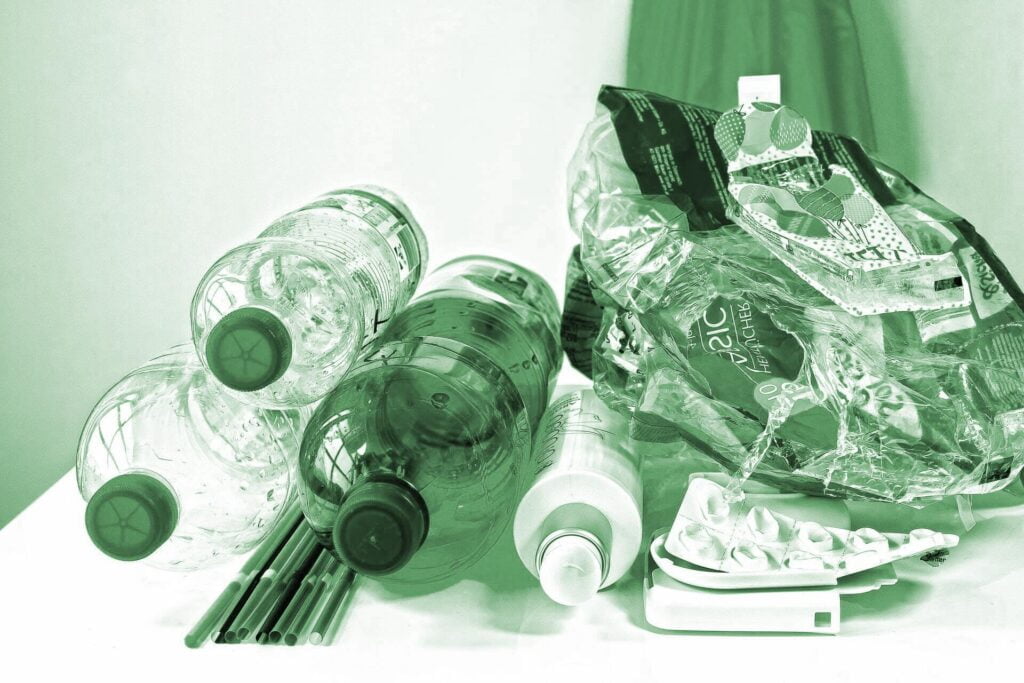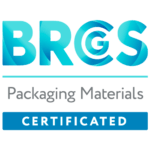Initially, packaging consisted of a single material. In many cases, this concept works fine, such as for glass jars, polyethylene terephthalate (PET) soda bottles, or metal cans. However, each of these materials has a limitation that inhibits its broader utilization: glass is heavy and fragile, PET does not provide a sufficient oxygen barrier for many products, and metal is not transparent. By combining different materials, ideal packaging concepts for most packaging requirements can be tailored.
In Europe, 49 million tons of oil and gas were used to produce plastic in 2015, constituting 4 to 6% of the total amount. About 40% thereof was used for packaging. Polyolefins (PO) make up the biggest share thereof, with low-density polyethene (LDPE) being the most prominent, followed by polypropene (PP), high-density polyethene (HDPE), and polyethylene terephthalate (PET). Smaller shares are contributed by polyvinyl chloride (PVC), polystyrene (PS), polyamide (PA), and other plastics.

WHAT IS A FLEXIBLE PACKAGING?
Flexible Plastic Packaging Market A two-layer packaging obviously consists of an inner side, facing the product, and an outer layer. Usually, in this case, the inner layer provides sealability, and the outer layer resistance against abrasion, printability, or barrier. Common sealant layers provide low-temperature sealability for fast packing line speeds and may also contribute to barrier performance. Ethylene-vinyl acetate (EVA), LDPE, linear-low-density polyethene (LLDPE), PE plastomers, and ionomers are standardly used, among which ionomers additionally provide exceptional oil and grease resistance.
Because those sealants often lack stiffness, structural integrity, and abrasion resistance, an outer layer, which also may bring an additional functionality, is used. HDPE provides a moisture barrier and is often used in packaging dry foods such as cereal and crackers. PA may be used where exceptional mechanical resistance is needed, such as in brick packages for cheese. Oriented PET films provide an excellent surface for printing. Paper is a low-cost substrate often used in pouches and bags.
PLASTIC WASTE RECYCLING
Mechanical recycling
This process can include the following steps:
- Separation and sorting that occurs based on shape, density, size, colour or chemical composition
- Washing to remove contaminants (often organic)
- Grinding to reduce size and to produce flakes
- Compounding and pelletizing to turn flakes into a granulate.
Extrusion is the foremost method used in mechanical recycling industries to produce regranulated material. It is cheap, large-scale, solvent-free, and applicable to many polymers. An extruder uses heat and rotating screws to induce thermal softening or plasticization after which it is fed through temperature-controlled barrel sections to produce fixed cross-section extrudate. This chain degradation reduces the polymer chain length and in turn lowers its mechanical properties and processability. The impact of the extrusion process depends on the chemical characteristics of the polymer and the chosen extrusion conditions. It is currently the almost sole form of recycling in Europe, representing more than 99% of the recycled quantities.

Chemical recycling
Chemical recycling turns plastic packaging waste into chemical products, avoiding their production from fossil feedstock in the first place. It is still in early development and has not been fully assessed environmentally. Chemical recycling could be a way around some of mechanical recycling’s shortcomings. Chemical processes are more tolerant of contamination, and they yield polymers that are identical to the originals, eliminating downcycling. Extracting more value from waste plastics this way, proponents say, could provide industry with the incentives and money it needs, perhaps creating a virtuous cycle. There are various chemical recycling technologies available that follow three new recycling routes to treat plastic waste:
- Dissolution: extracting plastic
- Depolymerisation: breaking it down to basic building blocks
- Conversion: turning it into raw materials
Dissolution
The dissolution recycling process starts with an initial step where plastic waste is sorted and prepared for further processing. The dissolution process uses some heat and solvents to dissolve plastic into a solution of polymers and additives that it was originally made from. In the following step the additives are separated from the polymers before recovering the polymers from the solution. During the dissolution process the structure of the polymer is not altered. In a final step, new additives are added to polymers to produce the new recycled plastic.
Depolymerisation
prepared for further processing. The depolymerisation process – often referred to as chemolysis or solvolysis – uses different combinations of chemistry, solvents and heat to break down polymers into monomers. Monomers are the building blocks of polymers. In the following step, potential contaminants are isolated from the monomers to remove them. The monomers are then fed back into the normal plastic production processes as a secondary raw material. The plastics produced this way are of similar quality than those made from traditional fossil resources.

Conversion
The conversion recycling process starts with mixed plastic waste being screened and prepared for further processing. This process then uses heat and chemistry in a reactor to break down the plastic waste into either a liquid, oil like feedstock (pyrolysis) or gaseous feedstock (gasification). The process takes place in absence of oxygen (pyrolysis) or presence of oxygen (gasification) to ensure high-quality products. In a following step, potential contaminants are isolated and removed. The produced oil or gaseous feedstock (re)enters the chemical production chain at the refinery or cracker level as secondary raw material replacing newly extracted fossil feedstock. The resulting products are used to manufacture chemicals including plastics of similar quality than those made from traditional fossil resources.



